
views
What causes white spots on plants?
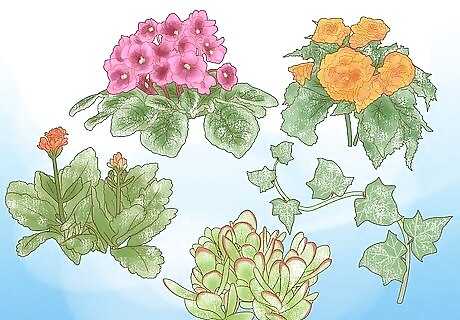
A fungal infection called powdery mildew causes white spots. Your indoor or outdoor plants can get infected when the conditions are right. It's a really common plant disease that affects over 10,000 plant species. Powdery mildew spores spread through the air and germinate on a new plant, so they keep spreading. Powdery mildew can survive through the winter even in cold temperatures. You might notice that it comes back year after year or always infects plants in a certain part of your garden. Indoor plants like African violets, begonias, ivy, jade, kalanchoe, and poinsettia commonly get powdery mildew.
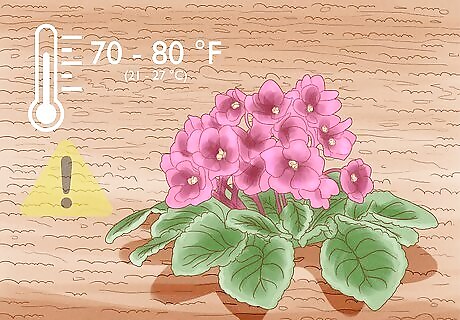
High humidity or excess moisture can cause powdery mildew. The fungi need moisture to thrive, so indoor houseplant infection can be caused by overwatering. For outdoor plants, high humidity levels, especially at night, and temperatures between 70 to 80 °F (21 to 27 °C) also cause powdery mildew. Most fungi that cause powdery mildew grow during spring and fall since they don't do well in temperatures over 90 °F (32 °C). Prevention tip: Allow your plants to dry out between waterings and check that indoor plant pots have good drainage. You should also avoid misting the plant or soaking the leaves.
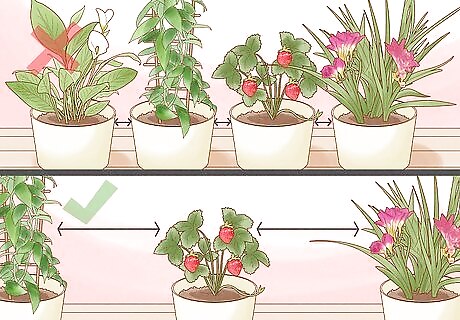
Poor air circulation also supports the spread of powdery mildew. If plants are too close together, they'll trap pockets of air, which can also raise the humidity. Plus, if one plant is infected with powdery mildew, the spores will easily travel to the nearby plants. Prevention tip: Leave the recommended amount of space between your fruits, vegetables, flowers, or plants. Read the plant container or seed pouch for the recommended amount of space. If plants have a lot of dense foliage that's causing crowding, prune them back regularly.
Does powdery mildew harm the plant?
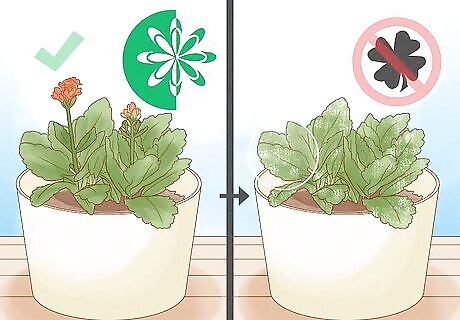
It can prevent healthy growth or spread to other plants. If a plant is severely infested (totally covered with powdery white mildew), the plant can struggle to produce flowers, fruit, or vegetables, and it can spread to plants that are close by. If you're dealing with powdery mildew on squash vines, it's probably late in the growing season and the plant will have already produced squash. In this case, you don't need to remove the leaves or treat for powdery mildew, since the squash aren't affected. In general, you don't need to cut off affected limbs from deciduous trees since the powdery mold doesn't really damage them.
How do you get rid of powdery mildew?
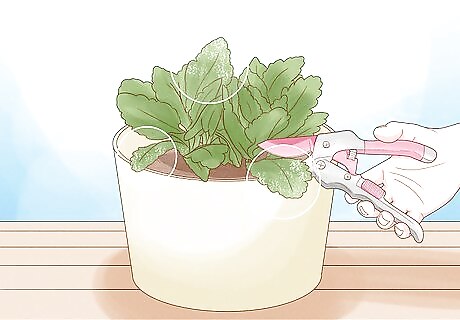
Cut off affected areas on houseplants, flowers, or garden plants. Disinfect your pruning tools and cut off leaves or vines that have powdery white spots. You'll probably notice that it's more concentrated in shady, overgrown areas. Once you've finished cutting off the affected leaves, throw the leaves in the garbage instead of your compost, and disinfect your tools again so you don't spread the fungal spores.

Spray horticultural oil on the plant at the first sign of infection. If your indoor or outdoor plant has a mild case of powdery mildew with white spots affecting just a few leaves, spritzing horticultural oil on the leaves can eliminate the fungi. Since horticultural oil is a pesticide that can harm plants, look for a plant-safe product that's got plant-based oils like neem oil or jojoba oil. If your plants are drought-stressed or the temperature is above 90 °F (32 °C), wait to apply the horticultural oil since it can stress your plants too much. Horticultural oil treats the fungi on contact, so you may need to apply it again as the plant puts on new growth.
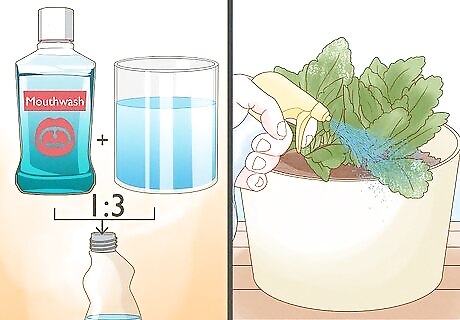
Try mouthwash to kill the bacteria that causes powdery mildew. Although there aren't any studies proving this works, it's a home remedy that some people swear by. Pour 3 parts water and 1 part mouthwash into a spray bottle. Then, spritz it directly on the affected parts of your plant. Choose an anti-bacterial mouthwash instead of a whitening or fluoride mouthwash.
How do you prevent powdery mildew?
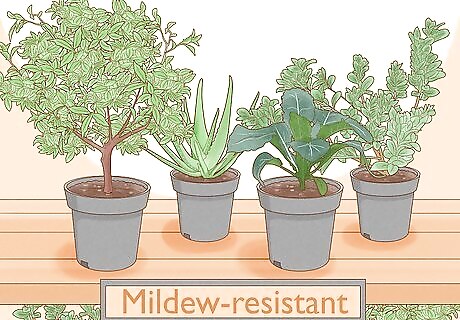
Purchase mildew-resistant plants. Since powdery mildew is such a common problem when it comes to plants, many nurseries offer mildew-resistant varieties of houseplants, trees, shrubs, vegetables, and fruits. Read the plant labels or seed packages to find out if they're disease resistant. It can also help to rotate the varieties you plant every year.
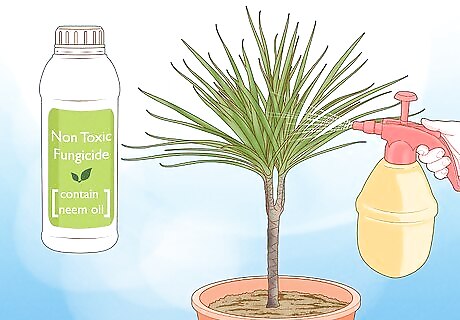
Apply a non-toxic fungicide to healthy plant leaves. If you've dealt with powdery mildew in the past, you'll probably want to treat plants preventatively, so it doesn't return. Shop for a horticultural oil or biological fungicide that contains neem oil, jojoba oil, or sulfur. Then, follow the manufacturer's instructions and spray the surface of the plant with the fungicide.
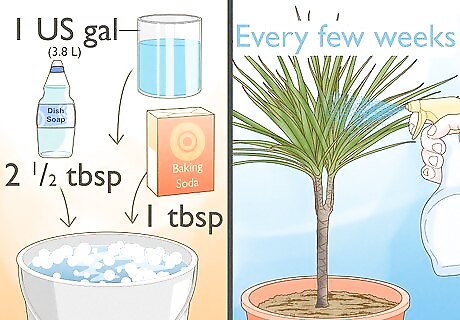
Use a homemade preventative spray. Pour 1 US gal (3.8 L) of water into a bucket and mix in 1 tablespoon of baking soda along with 2 1/2 tablespoons of dish soap or horticultural oil. Transfer your solution to a spray bottle and spritz it onto the plant every few weeks or whenever you see new plant growth. You don't want to spray too often or baking soda will build up in your soil. This can strip calcium and magnesium from it.
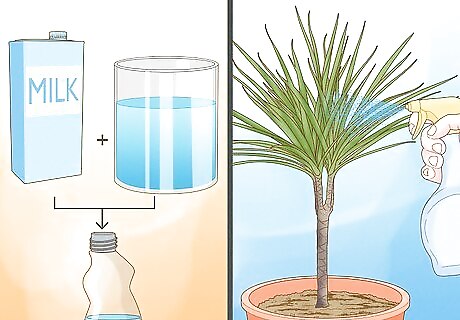
Try spraying the healthy leaves with milk. This is a home remedy that actually shows scientific promise. Fill a spray bottle with 1 part milk and 9 parts water. Then, spritz it over the surface of the healthy leaves during active growing seasons. Unfortunately, researchers don't know which plants benefit the most from a milk spray. Since milk leaves a cloudy or white film on the surface of the leaves, you may want to skip it for houseplants.













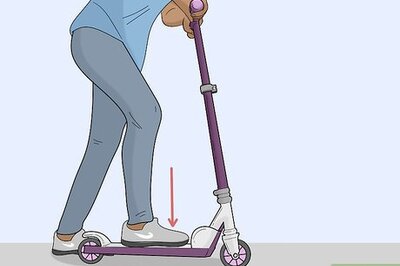



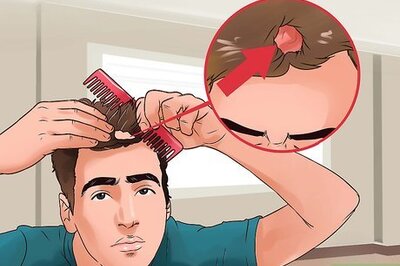


Comments
0 comment